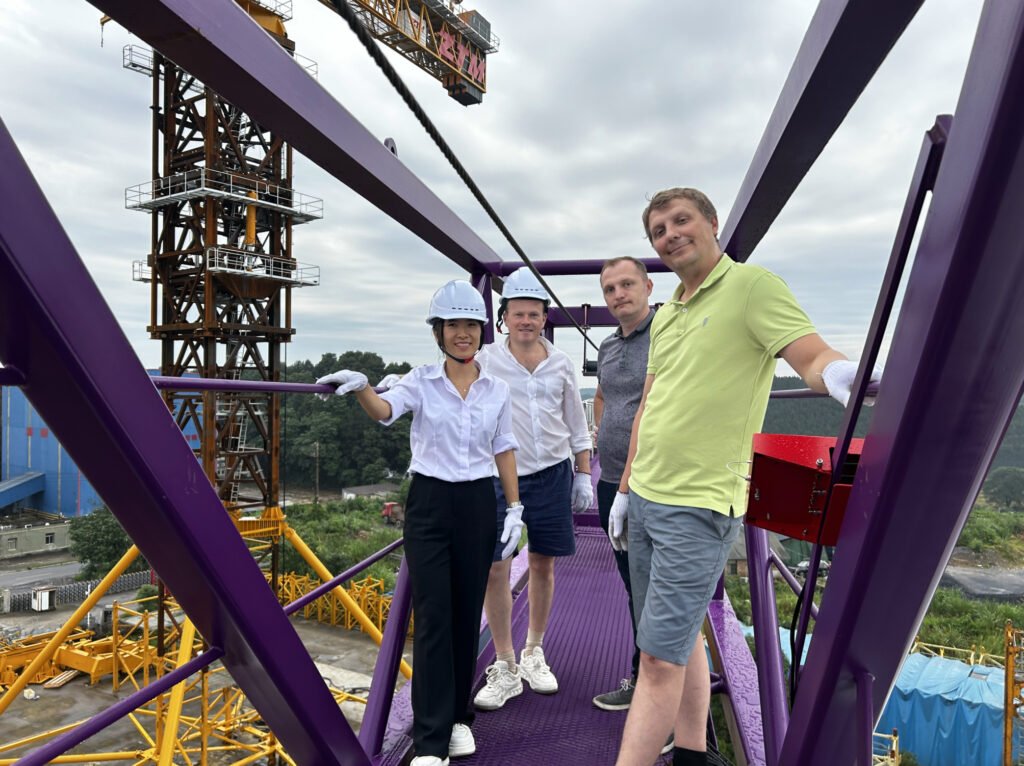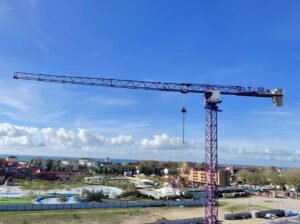How to maintain a tower crane?
I’m the CEO of a leading tower crane manufacturing company, and I understand the challenges our customers face when it comes to maintaining their cranes. Early in my career, I saw the expensive results of not maintaining cranes—downtime, safety hazards, and costly repairs.
To maintain a tower crane effectively, I advocate for a structured maintenance routine. This includes daily visual inspections, weekly cleanings and lubrications, monthly structural checks, and comprehensive annual evaluations. These practices can significantly extend the life of your crane and make it more reliable on the job site.
In this article, we will cover:
Comprehensive Maintenance Overview
Daily Inspections
Visual Inspection
Each day, before putting the crane to work, a thorough visual inspection should be conducted. This process typically takes 15-30 minutes. Key areas to inspect include:
- Tower: Look for cracks, rust, or signs of corrosion. Pay special attention to joints and welds.
- Boom: Inspect for any deformation or wear, especially near pivot points. Any signs of bending can indicate a serious issue.
- Cables: Check for fraying or significant wear. If any strands are broken, replace the cable immediately.
- Counterweights: Ensure they are secure and free from corrosion. Any looseness can affect stability.
In my experience, dedicating just a few minutes to this inspection can save considerable time and resources later. If any issues are detected, document them and take immediate action. For instance, if a cable shows signs of wear, prioritize its replacement before the next lift.
Fluid Level Checks
Fluid level checks are essential. Low hydraulic fluid levels can lead to inefficient operation and potential system failures. Here’s what to check:
- Hydraulic Oil: Check the hydraulic oil level using the sight gauge. Ensure it is within the recommended range.
- Engine Oil and Coolant: Use a dipstick for oil and inspect coolant levels. Both should be topped off as needed to avoid overheating.
Daily checks are quick but crucial for maintaining operational integrity.
Weekly Cleanings
Cleaning Components
Weekly maintenance requires a more thorough cleaning routine, which typically takes 30-60 minutes. Focus on these specific parts:
- Pulleys: Use compressed air to blow out dirt and debris. Any buildup can cause friction and wear.
- Hook Blocks: Clean any accumulated dirt to ensure smooth operation.
- Other Movable Parts: Regularly clean all joints and hinges to prevent rust.
A clean crane not only performs better but also reflects our commitment to quality and safety. This routine helps prevent mechanical failures caused by dirt accumulation.
Lubrication
In conjunction with cleaning, lubricating moving parts is essential. Follow these steps:
- Identify Moving Parts: Focus on joints, rollers, and pivot points.
- Use Recommended Lubricants: Always adhere to the manufacturer’s guidelines. For instance, use lithium grease for high-load applications.
- Frequency: Ensure lubrication is done weekly to minimize friction and wear.
Proper lubrication can significantly reduce the risk of part failures, ultimately saving you money in repairs.
Monthly Structural Checks
Structural Inspection
Every month, a detailed structural inspection should be performed. This process usually takes around 1-2 hours. Key areas to check include:
- Electrical Systems: Inspect wiring for wear, corrosion, or fraying. Any exposed wires must be repaired immediately.
- Control Panels: Ensure all controls are functional and free from damage. Look for signs of overheating or wear.
- Overall Structural Integrity: Check welds, joints, and connections for signs of wear.
A comprehensive inspection helps catch problems before they escalate into serious failures.
Replace Worn Parts
During your monthly maintenance, identify and replace any worn or damaged components. Focus on:
- Cables: Inspect for fraying and replace them every 6-12 months, depending on usage.
- Hooks: Inspect and replace if there are significant wear marks or deformation.
By proactively addressing these issues, you can avoid costly emergency repairs down the line.
Annual Evaluations
Comprehensive Evaluation
An annual inspection is vital for maintaining the overall health of your crane. This comprehensive evaluation often requires the expertise of professional technicians who will examine:
- Structure: Inspect for any signs of structural integrity issues.
- Mechanical Systems: Assess the functionality of all moving parts.
- Safety Features: Verify all safety mechanisms are operational.
This inspection typically takes a full day and should be scheduled well in advance to minimize downtime.
Compliance Check
During the annual inspection, ensure that the crane complies with local regulations and safety standards. This process includes checking:
- Safety Certifications: Verify that all necessary safety certifications are up to date.
- Operating Limits: Ensure that the crane is used within its specified load limits to prevent overloading.
Compliance not only protects your workers but also enhances your company’s reputation in the industry.
Maintenance Costs
Understanding the costs associated with maintaining a tower crane is crucial for budgeting. Regular maintenance involves various expenses, including:
- Labor Costs: Paying staff for routine inspections and repairs.
- Parts Replacement: Costs associated with replacing worn components.
- Downtime: Any downtime due to maintenance can also incur costs.
On average, you might expect to spend about 2-5% of the crane’s purchase price annually on maintenance. This investment can save you significantly in the long run by preventing major repairs and ensuring operational efficiency.
Additionally, neglecting maintenance can lead to far greater costs. Unplanned downtime and emergency repairs can delay projects and impact financial outcomes.
Lifespan Under Different Usage Conditions
The lifespan of a tower crane can vary significantly based on its usage and maintenance practices. Generally, with proper maintenance, a tower crane can last between 10 to 20 years. However, several factors can influence this:
- Heavy Usage: Cranes used on demanding construction sites may experience more wear and tear, shortening their lifespan. If a crane is operated continuously with heavy loads, anticipate replacing parts more frequently.
- Environmental Conditions: Cranes operating in harsh weather (extreme heat, cold, or high winds) may face additional stress, necessitating more frequent maintenance. For instance, cranes in coastal areas may require more frequent inspections due to corrosion from saltwater.
- Operational Practices: Well-trained operators who adhere to safety protocols can enhance the crane’s longevity by minimizing risks of misuse or accidents. Investing in operator training pays dividends in the form of reduced wear and improved operational efficiency.
Regular maintenance is key to extending the life of your crane, regardless of these factors.
Safety Measures
Operator Training
One of the most critical aspects of maintenance is ensuring that operators are properly trained. Comprehensive training includes:
- Understanding Safety Protocols: Operators must know the specific safety measures associated with the crane.
- Maintenance Procedures: Operators should be familiar with daily maintenance checks and know how to identify potential issues.
I encourage our clients to invest in ongoing training programs. Well-trained operators are more likely to identify issues before they escalate into significant problems.
Emergency Preparedness
Developing an emergency plan is vital for any construction site. Preparing for potential malfunctions or accidents by having protocols in place ensures that your team knows how to respond effectively. Key components include:
- Regular Drills: Conduct emergency response drills regularly to ensure everyone knows their roles.
- Clear Communication: Establish a communication plan for emergencies, including how to alert team members and first responders.
Regularly reviewing these plans with your team helps maintain awareness and readiness, minimizing the impact of unexpected incidents.
Conclusion
In summary, maintaining a tower crane is essential for ensuring safety, efficiency, and longevity. By adhering to a structured maintenance routine—from daily inspections to annual evaluations—you can protect your investment and enhance productivity. A well-maintained crane not only supports your projects but also fosters a safer work environment for everyone involved.
At our company, we are committed to providing high-quality cranes and the knowledge needed for effective maintenance. Together, we can ensure that every lift is safe and successful.






